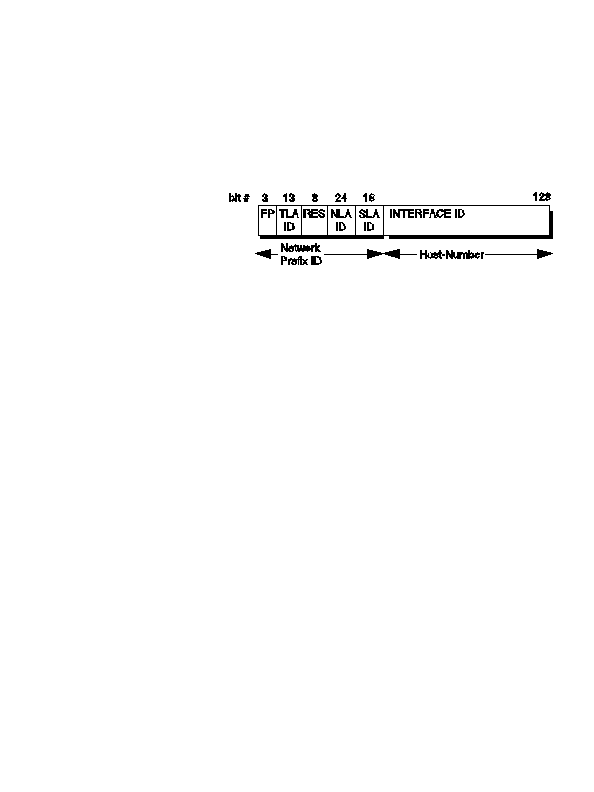
tems. Large central office phone switches, for example, need only a
three digit national area code prefix compared to the current IPv4 sys
tem, which uses a somewhat haphazard form of address hierarchy to
move traffic between networks attached to the Internet backbone. Fig
ure 37 shows a globally routable unicast prefix divided into six sec
tions.
F I G U R E 3 7 . G l o b a l l y R o u t a b l e I P v 6 U n i c a s t A d d re s s
A rc h i t e c t u re
The fields in the aggregatable global unicast address are:
FP Indicates the Format Prefix (FP). The Format Prefix for globally
routable unicast prefixes will always have the same three bits in the
initial deployment of IPv6. These first three bits indicate to any rout
ing entity on the Internet that this address is a globally routable uni
cast address. The FP will be unique to each type of IPv6 address,
making it easier for routing entities to discern packet types and
process them according to the rules that apply to the respective
packet type. The FP serves as a delimiter, enabling a routing device to
make a quick decision as to how to handle the incoming packet. This
addressing scheme allows the rest of the packet to be used for other
valuable information.
TLA ID Indicates the Top Level Aggregator (TLA). TLAs are admin
istered by IANA and allocated to local Internet registries that, in turn,
allocate individual TLAs to large Internet service providers (ISPs). A
13 bit field allows up to 8,192 TLAs. Routers in the highest level of
the IPv6 Internet routing hierarchy (called default free routers) do not
have a default route only routes with 16 bit prefixes corresponding to
the allocated TLAs.
Res Indicates bits reserved for future use in expanding the size of
either the TLA ID or the NLA ID. The size of this field is 8 bits.
NLA ID Indicates the Next Level Aggregator (NLA). The NLA ID is
used to identify a specific customer site. The size of this field is 24
bits. The NLA ID allows an ISP to create multiple levels of addressing
hierarchy within a network to organize addressing and routing for
downstream ISPs and to identify sites. The structure of the ISP's net
work is transparent to the default free routers.
U N D E R S TA N D I N G I P A D D R E S S I N G
4 6
footer
Our web partners:
Inexpensive
Web Hosting
Jsp Web Hosting
Jsp Web Hosting
Cheapest Web Hosting
Java Web Hosting
Quality Web Templates
Dreamweaver Web Templates
Frontpage Web Templates
Jsp Web Hosting
Cheapest Hosting
Cheapest Web Hosting
Java Web Hosting
Tomcat Web Hosting
Quality Web Hosting
Best Web Hosting
Java Web Hosting
Visionwebhosting.net Business web hosting division of Vision Web Hosting Inc.. All rights reserved

